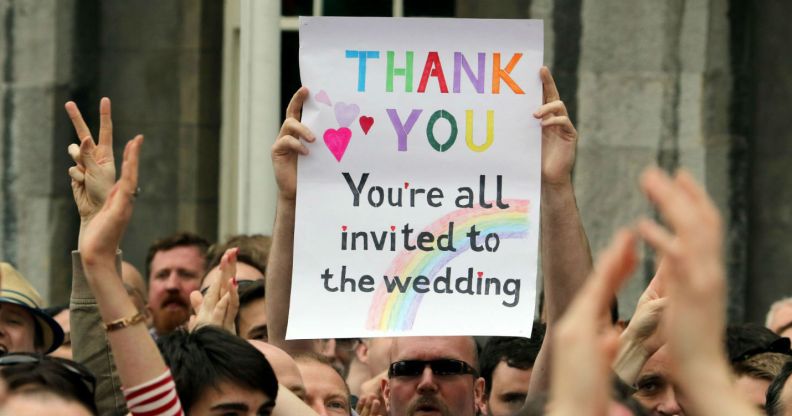First same-sex weddings to take place in Ireland on MONDAY!

The first same-sex weddings will take place in Ireland on Monday.
After months of waiting, the first gay and lesbian couples will be able to marry in Ireland from Monday 16 November.
The final stage of the process, following from a victory after Ireland held a referendum on same-sex marriage, was for the Justice Minister Frances Fitzgerald to sign the commencement order.

Meanwhile the Tanaiste Joan Burton signed the accompanying legislation under the Civil Registration Act.
Now those is done, and since the Irish Senate passed the bill in October, the Marriage Equality Act can go ahead.
The government had pledged to legislate to permit weddings as soon as possible – but the plans were hit by delays due to a legal challenge to the ruling, and Parliamentary recess.
However, after the Seanad passed the bill last week, and the President signed it on Thursday, all that is needed now is a commencement order from the justice minister.
LGBT activists have also praised those who fought to push the bill through as quickly as possible.
“Tribute must also be paid to national politicians in Ireland, as all the main political parties put aside their partisan differences to campaign for the greater goal of equality,” Evelyne Paradis of the International Lesbian, Gay, Bisexual, Trans and Intersex Association said in a statement.
A spokesperson for the Department of Justice previously said the weddings would hopefully go ahead “before the end of this year” if all goes to plan.

Last month, Ireland’s government also put its revolutionary new Gender Recognition Act into effect – meaning transgender people can now gain legal recognition without seeing a doctor.
The bold new Gender Recognition Bill, which passed through Parliament in July without issue, includes sweeping changes to allow transgender people to self-declare their gender.
The form to apply for an Irish GRC is just two pages long – compared to other countries, where the process is often full of bureaucratic hurdles. The two-page form compares to the five pages you’d have to fill out to replace a missing pensions book.

